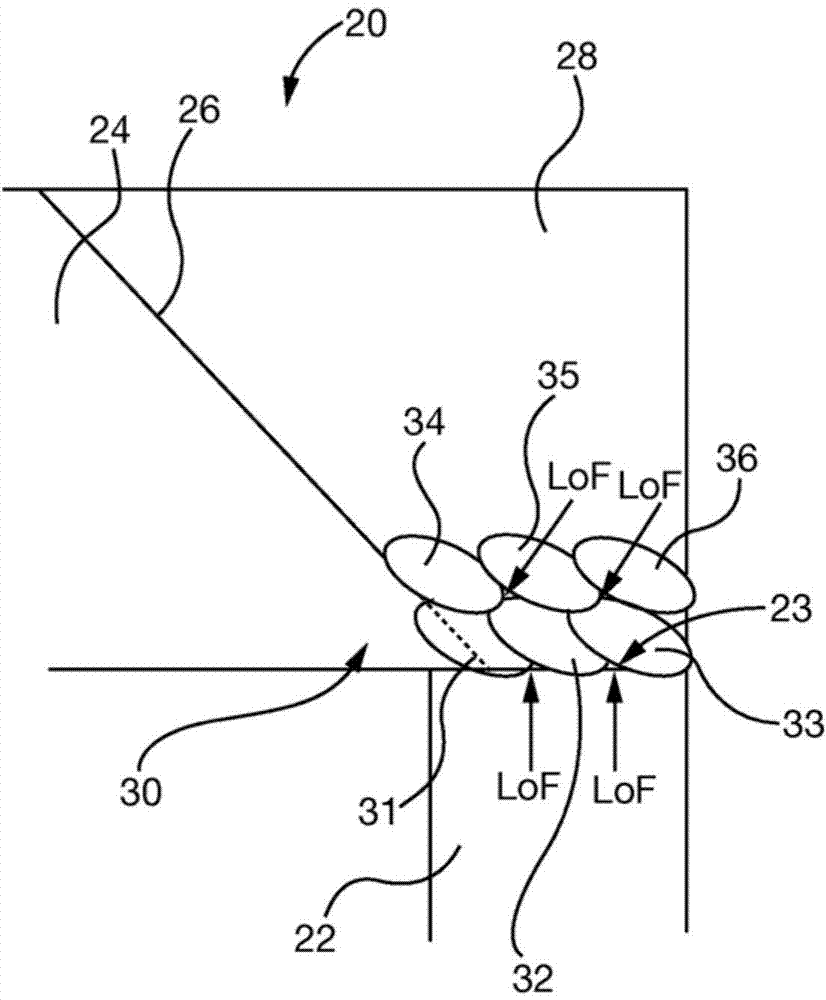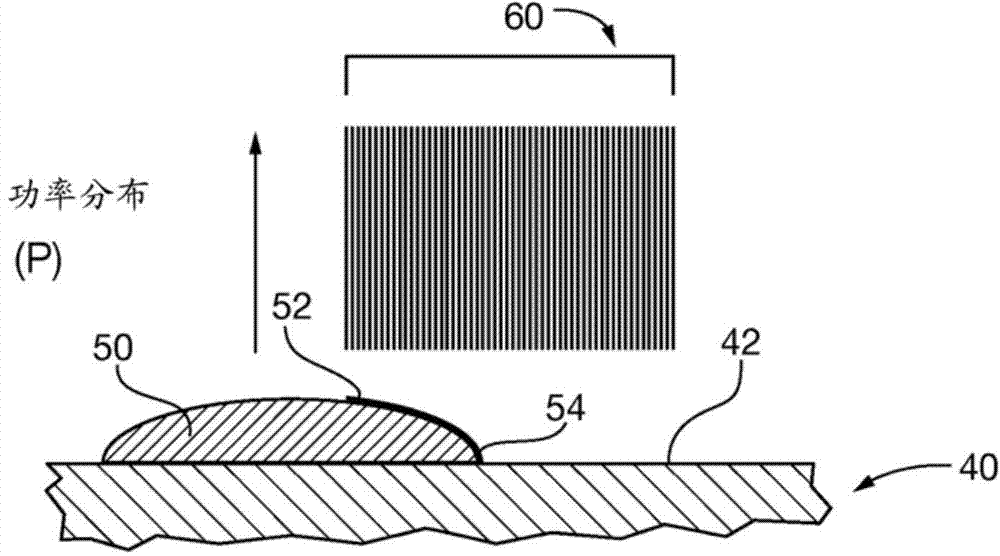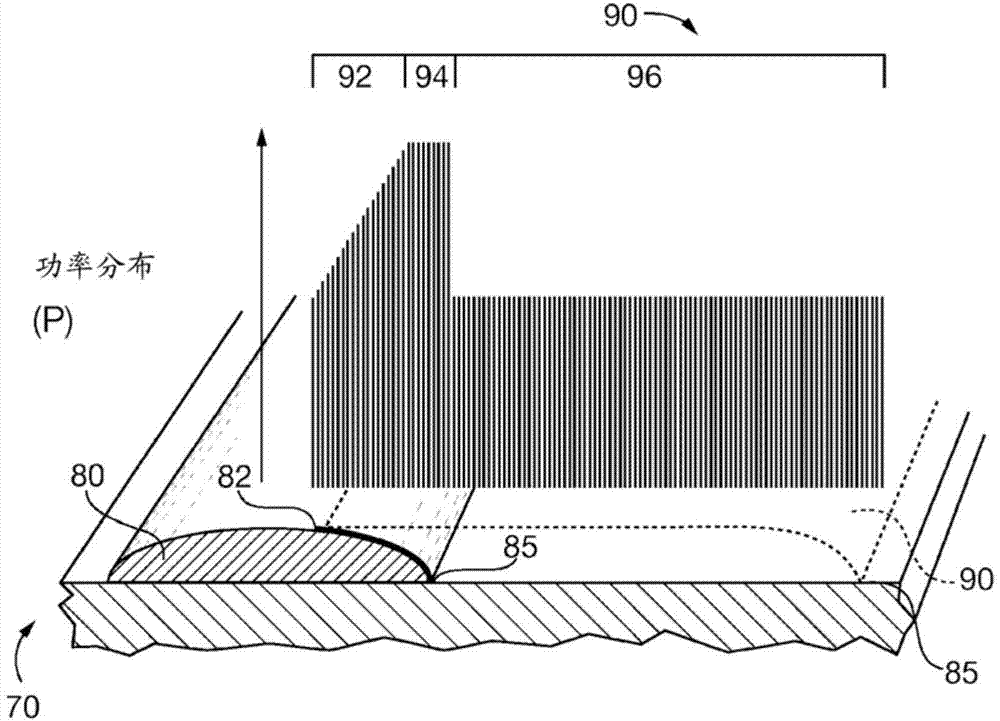Superalloy laser cladding with surface topology energy transfer compensation
A super heat-resistant alloy and energy transfer technology, applied in laser welding equipment, manufacturing tools, metal processing, etc., can solve problems such as overheating and overmelting
- Summary
- Abstract
- Description
- Claims
- Application Information
AI Technical Summary
Problems solved by technology
Method used
Image
Examples
Embodiment Construction
[0034] After considering the following description, those skilled in the art will clearly recognize that the teachings of the present invention can be easily used to repair superalloy parts, such as turbine blades and vanes, by laser beam welding. Adhesion of the heat-resistant alloy substrate to one or more cladding layers without thermal degradation of the substrate. The laser cladding method of the present invention changes the laser light energy transfer rate to compensate for changes in the local substrate topography, so that the energy transfer to the filler and the substrate remains uniform during welding.
[0035] Enough laser light energy is transmitted to the welding filler material and the underlying substrate to ensure that the filler is melted and the substrate surface is properly wetted for good fusion. However, the energy transfer is maintained below a level that endangers the thermal degradation of the substrate. When the laser beam and the substrate move relativ...
PUM
 Login to View More
Login to View More Abstract
Description
Claims
Application Information
 Login to View More
Login to View More - R&D
- Intellectual Property
- Life Sciences
- Materials
- Tech Scout
- Unparalleled Data Quality
- Higher Quality Content
- 60% Fewer Hallucinations
Browse by: Latest US Patents, China's latest patents, Technical Efficacy Thesaurus, Application Domain, Technology Topic, Popular Technical Reports.
© 2025 PatSnap. All rights reserved.Legal|Privacy policy|Modern Slavery Act Transparency Statement|Sitemap|About US| Contact US: help@patsnap.com



